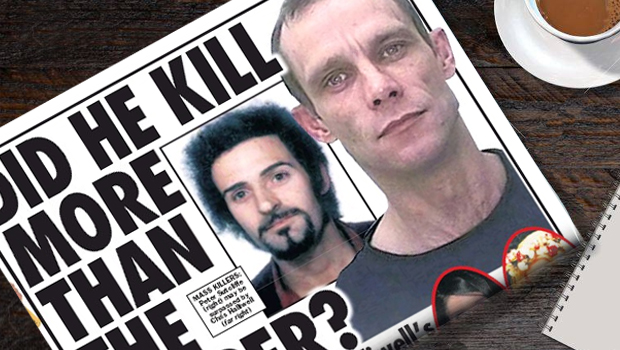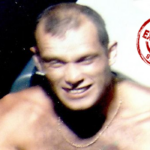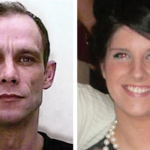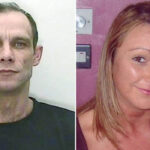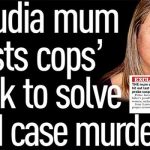Halliwell’s Undetected Victims
by TIM HICKS & CHRIS CLARK
~~~~~
5.6. Halliwell’s Undetected Victims
Introduction
The illustration above poses the question “Did serial killer Christopher Halliwell commit more murders than Yorkshire Ripper Peter Sutcliffe?”. That is an imponderable. However, a quick comparison of their relative capabilities is illuminating:
- Halliwell knew how to dismember a carcass from his training as a butcher. He concealed his victims’ bodies. Hence it is much more difficult to assess how many victims he had.
- Although they were both forensically aware, Halliwell had studied forensic science in detail and had a small library of books on the subject. He was therefore very much more skilled than Sutcliffe in ensuring he left no evidence behind.
- Sutcliffe committed twelve attempted murders and fourteen murders. A failure rate of 43%. (see Table 1 below) In contrast, Halliwell was stronger and fitter than Sutcliffe. He had trained as a butcher and could use a knife. So far as we know, none of Halliwell’s victims survived an attack, so they could not give evidence against him.
There is no doubt that Halliwell was a much more skilful serial killer than Sutcliffe. The hypothesis that Halliwell killed more victims than Sutcliffe is therefore entirely credible, in the authors’ view.
There is a more in depth comparison of both serial killers by the authors here.
How many victims?
Both of the Senior Investigating Officers that investigated Halliwell (Detective Superintendent’s Fulcher and Memory) stated openly that they were convinced that Halliwell had committed other murders which had yet to be detected.
Most serial killers start in their late teens and early twenties. It is rare for men to begin to kill in their late 30s. When he was in prison between 1985 and 1987 (aged twenty one to twenty three), Halliwell boasted to a cell mate that he had already killed one woman and wanted to become a serial killer.
On the basis of two or three murders a year in the period 1987 to his arrest in 2011, it is possible that Halliwell could have killed sixty women.
Far-fetched?
- The estimate of two or three victims a year is reasonable, in the authors’ view. In one year, (1977) Yorkshire Ripper Peter Sutcliffe murdered at least five women. (See Table 1 above).
- During the course of its investigation into Halliwell, Wiltshire Police discovered three “trophy stores” of sixty two clothing it suspected were taken from his victims. These were:
- A pond at Ramsbury, Wiltshire, from where they recovered one of victim Sian O’Callaghan’s boots.
- A burial site at Ramsbury, Wiltshire, where they recovered the other of Sian O’Callaghan’s boots, victim Becky Godden-Edwards’ cardigan and fifty nine other items of women’s clothing.
- Halliwell’s garage where they recovered a pair of knickers that did not belong to his wife or his daughter. (They may have been in the garage from a more recent, but unknown victim and were waiting to be transported to Ramsbury).
The implication being that Halliwell could easily be responsible for sixty murders.

Becky Godden-Edwards’ (murdered 2003) cardigan, recovered from the trophy store at Ramsbury, Wilts in 2011.
The man who caught Halliwell – Detective Superintendent Steve Fulcher – has been quoted in The Sun as saying:
‘Buried around the pond were more items of women’s clothing. I wondered, did they belong to the six other victims I suspected Halliwell of killing? But I had my maths wrong.
Around the pond were not six other items of women’s clothing. There were 60.
Halliwell might have been far more prolific than even I had feared.’
Daily Mail coverage with his remarks in full here.
Analysis of Halliwell’s undetected victims
So who are the missing victims?
They fall into five distinct categories:
- Murders for which no one has been convicted and which the police have not connected Halliwell to. (E.g. Vicky Glass).
- Murders where (a) the wrong man has been convicted, or (b) the wrong man has been accused of the murder and the police are not pursuing any other suspects, because of ‘confirmation bias’ (see below) in the investigation. (e.g. Ann Heron).
- Missing persons that the police are satisfied are murder victims (“no body murders”) even though there is no physical evidence of crime (e.g. Claudia Lawrence).
- Murder victims whose bodies have been concealed, who the police are treating as missing persons i.e. probably still alive, not murder victims. (e.g. Helen Sage).
- Murder victims whose bodies have been concealed, but who have not been reported as missing. So consequently the police are genuinely unaware that any crime has taken place. (e.g. Becky Godden-Edwards, who was only known to be missing when the police recovered her body).
Police media operations against the NYE’s Halliwell investigation
The NYE has recently been running a series of articles on the crimes which may have been committed by serial killer Christopher Halliwell, who is currently serving a full life term for two murders committed in Swindon in 2003 and 2011:
- The breaking of Detective Superintendent Stephen Fulcher. By Tim Hicks
- Book review: “Catching a serial killer” by Stephen Fulcher. By Tim Hicks
- Christopher Halliwell and Peter Sutcliffe compared. By Chris Clark & Tim Hicks
- Christopher Halliwell how many victims? By Chris Clark & Tim Hicks
- Christopher Halliwell: The Secret Murders. By Chris Clark & Tim Hicks. Parts 1 – 9.
- Scotland
- Is Halliwell the “East Lancs Ripper”?
- The other Northern and Midlands cases
- Have you seen this man?
- The River Tees Murders
- Halliwell’s undetected victims.
- Police media operations against the NYE’s Halliwell investigation.
- York: Did Halliwell murder Claudia Lawrence?
- The Swindon
- InsideOut Justice. Who murdered Linda Razzell?
- Christopher Halliwell the documentary
- Detective Superintendent Fulcher: The TV Series
Detective Superintendent Fulcher the TV series
These articles are now arguably the best source of information on the full range of crimes potentially committed by Halliwell openly available.
Whenever we run an article on a cold case, the NYE always runs an appeal for information, to try to progress them by keeping these cases in the public eye and generating information. This is in the public interest and can assist the police.
However, despite this, the NYE has been the subject of hostile media operations by four police forces, during its investigation into Christopher Halliwell. These operations are ongoing and appear to be intended to deter the NYE from commenting on murders that Halliwell could possibly have been responsible for.
So why are the police trying to inhibit media comment or publicity on cold cases that could lead to a breakthrough?
- There is a natural antagonism between the police and journalists, referred to above by DCC Morgan. Some of the NYE articles have been critical of police investigations and the police generally do not appreciate being taken to task, or criticised by journalists.
- Miscarriages of justice can occur because of confirmation bias (the tendency to search for, interpret, favor, and recall information in a way that confirms one’s preexisting beliefs or hypotheses) within the police investigation. As an example, in the Ann Heron case, the victim’s husband Peter was arrested and charged with her murder. Durham Police dropped the charges when he threatened to sue for wrongful arrest. (NYE investigation here). The conviction of a serial killer for a historical crime may reveal failings in the original investigation. This in turn could result in legal action, media criticism and a lack of confidence in the police.
- Halliwell is permanently imprisoned, so resolution of historic cases will not improve public safety, (although it will bring closure to the victims). Understandably Chief Constables therefore prefer to focus police resources on addressing current policing priorities.
- Following the conviction of Yorkshire Ripper Peter Sutcliffe, (who may also have operated in North Yorkshire, NYE investigations here, here and here) the conduct of the investigation by West Yorkshire Police was severely criticised by senior policeman Sir Lawrence Byford. Byford assessed that the investigation was flawed, that Sutcliffe should have been arrested earlier and if he had been; it would have prevented the deaths of several of his victims.
No Chief Constable will willingly open up his force to criticism. As an example, look at the resistance the NYE had from North Yorkshire Police before the force would admit to its inexcusable failure to arrest Scarborough Mayor and Conservative Councillor Peter Jaconelli. BBC Report here.
In particular, should a Chief Constable admit that his force failed to arrest a serial killer, it will open his force up to a furore of criticism for allowing Halliwell to go on to commit further murders. Particularly as in this case, if there are indeed sixty of them.
Hence, perhaps, the reason the NYE team has been subjected to a media suppression operation by four police forces. This may not be a co-ordinated operation – although once this article is published, it will probably become one – it just appears to be the natural and universal reaction of any individual police force to informed media criticism.
This may also explain why the British police service has never conducted a successful historical investigation into a serial killer which has identified all of his victims.
Summary
The authors therefore believe that sometimes police politics and conflicts of interest can prevent the impartial investigations of unsolved crimes by a serial killer.
Certainly, the response of the police to the NYE’s Halliwell investigation has completely vindicated the concerns expressed by Detective Superintendent Stephen Fulcher, over the failure to follow up properly on the other murders Halliwell undoubtedly committed.
The NYE investigation continues.
In the next article, we will detail the media operation that has been mounted against the NYE to prevent comment on Halliwell’s other victims.
This article closes with our usual appeal for information.
Have you seen Christopher Halliwell at any time in the period 1987 – 2011?
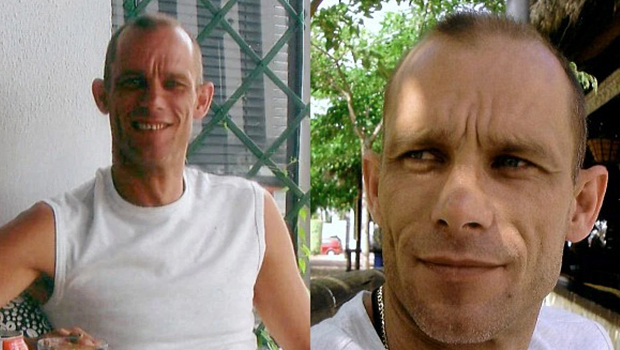
Christopher Halliwell
He had a slim, athletic build and spoke with a slight Swindon accent. You can see and hear him in the video here taken while he was in custody.
Any information would considerably assist our knowledge of Halliwell’s movements. So please contact the NYE using our e mail address: news@nyenquirer.uk if you think you can help.



